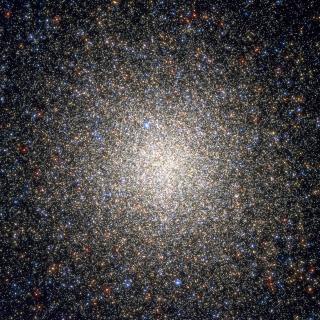Bibcode
McQuinn, Kristen B. W.; Skillman, Evan D.; Cannon, John M.; Dalcanton, Julianne; Dolphin, Andrew; Hidalgo, S. L.; Holtzman, Jon; Stark, David; Weisz, Daniel; Williams, Benjamin
Referencia bibliográfica
The Astrophysical Journal, Volume 724, Issue 1, pp. 49-58 (2010).
Fecha de publicación:
11
2010
Revista
Número de citas
153
Número de citas referidas
140
Descripción
The starburst phenomenon can shape the evolution of the host galaxy and
the surrounding intergalactic medium. The extent of the evolutionary
impact is partly determined by the duration of the starburst, which has
a direct correlation with both the amount of stellar feedback and the
development of galactic winds, particularly for smaller mass dwarf
systems. We measure the duration of starbursts in twenty nearby,
ongoing, and "fossil" starbursts in dwarf galaxies based on the recent
star formation histories derived from resolved stellar population data
obtained with the Hubble Space Telescope. Contrary to the shorter times
of 3-10 Myr often cited, the starburst durations we measure range from
450to650 Myr in fifteen of the dwarf galaxies and up to 1.3 Gyr in four
galaxies; these longer durations are comparable to or longer than the
dynamical timescales for each system. The same feedback from massive
stars that may quench the flickering star formation does not disrupt the
overall burst event in our sample of galaxies. While five galaxies
present fossil bursts, fifteen galaxies show ongoing bursts and thus the
final durations may be longer than we report here for these systems. One
galaxy shows a burst that has been ongoing for only 20 Myr we are likely
seeing the beginning of a burst event in this system. Using the duration
of the starbursts, we calculate that the bursts deposited
1053.9-1057.2 erg of energy into the interstellar
medium through stellar winds and supernovae, and produced 3%-26% of the
host galaxy's mass.
Based on observations made with the NASA/ESA Hubble Space Telescope,
obtained from the Data Archive at the Space Telescope Science Institute,
which is operated by the Association of Universities for Research in
Astronomy, Inc., under NASA contract NAS 5-26555.
Proyectos relacionados

Vía Láctea y galaxias cercanas
El objetivo general del Proyecto es el estudio de la estructura, historia evolutiva y proceso de formación de galaxias a través de sus poblaciones estelares resueltas, tanto a partir de fotometría como espectroscopia. El proyecto puede dividirse en cuatro líneas principales: I. Historia de formación estelar en el Grupo Local. El objetivo de esta
Martín
López Corredoira